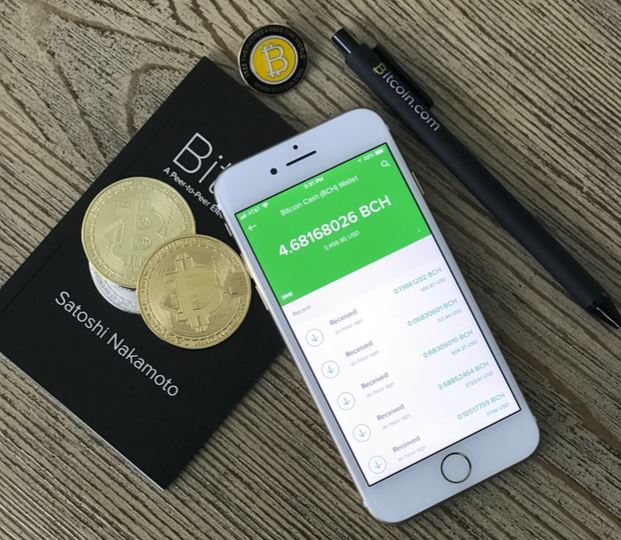Crypto Crash: Bitcoin Bubble Pops, And Institutional Investors Return To Gold
It’s official: Bitcoin topped at $64,829 just one month ago in mid-April. Since then, it plunged nearly 50%, going as low as the $30,000 level. There is an onslaught of opinions on this Bitcoin bubble from major economic analysts to individual YouTube investors. Some people suggest that simple charts show this crash identical to 2018, and they also seem to believe the next rise will be higher than this one. But, skeptics are not so sure. Some even believe this is a classic manipulation because the chart for the BTC Futures contract aligns with a textbook definition of Wyckoff Distribution. Whether or not this was market manipulation, the Bitcoin bubble has popped for now, and it seems that investors are returning to gold.

Image Source: Unsplash
Other cryptocurrencies also fell in line with Bitcoin, including Ether, Doge, and Litecoin. Ether fell sharply, winding up below $2,000. This is a more than 40% crash within a 24-hour cycle. This recent slump may be a reversal from the rise that began during the second half of 2020. Bitcoin is still more than 200% higher than where it was in September. This was a dramatic bull rally whose fuel was hedge fund managers, banks, and other major companies supporting the crypto market. With tax day, Elon Musk’s tweets, and the recent federal bans on cryptocurrency, this appears to be a massive liquidation event.
What Caused The Bitcoin Bubble’s Burst?
Turkey and China Ban Crypto
Back in April, Turkey banned cryptocurrency after suggesting that major irreparable financial damages could occur. Following the Turkish Royal Motors’ announcement that they would accept cryptocurrency payments, the central bank said:
"[Cryptocurrency's] use in payments may cause non-recoverable losses for the parties to the transactions ... and include elements that may undermine the confidence in methods and instruments used currently in payments."
Traders responded by saying that these hard bans are often rare and hard to enforce. Similar bans in the past accomplished little in regards to banning Bitcoin. However, India also recently proposed a ban on trading and holding cryptocurrencies.
Tough crackdowns are rare for the cryptomarket, but China just banned cryptocurrency trading for all financial and payment institutions. As the second-largest economy in the world, this announcement has a much greater impact on the Bitcoin bubble.
It's possible that this eliminates the competition for the Chinese digital Yuan. But, China’s hard stance on crypto is not new at all. Back in 2017, when China actually began the process of creating the digital Yuan, authorities banned initial coin offerings and shut down local crypto exchanges. This entirely cut the head off an emerging crypto industry in China.
Today’s further reiteration of the 2017 ban includes more limits that were not covered before. Now, institutions cannot use cryptocurrency for any transactions, nor can they provide exchanges between the Yuan, crypto, or foreign currencies. Individuals cannot buy cryptocurrency easily anymore, and miners will not be able to exchange their crypto for Yuan. This federal crackdown on crypto in China could be a major trigger for what causes the next crypto winter. “Crypto winter” encompasses the idea of reduced and quiet trading activity with minimal growth. Major countries either limiting or banning the use of cryptocurrencies may only worsen the Bitcoin bubble now.
Elon Musk Backtracks on Bitcoin Payments
Crypto began to fall last week owing to Musk’s about-face on Bitcoin. Suddenly, the “Technoking of Tesla” rolled back on his support for Bitcoin as a payment method. This was prompted by the fact that, apparently, Musk did not realize how much energy Bitcoin consumes.
Seeing as Tesla is a major electric automobile manufacturer, Musk felt it is against his company’s green and climate-friendly mission. His comments unfortunately caused over a $300 billion loss on the crypto market on May 12. He did, however, maintain that Tesla has “diamond hands” in a tweet on May 19. This indicates that Tesla will not be selling its Bitcoin holdings at this time.
Source: Twitter
Still, Bitcoin has now lost all its gains after Tesla announced purchasing $1.5 billion worth of crypto. It has also plunged more than 50% since it achieved its highest level ever--just 30 days ago.
Institutional Investors Return to Gold
JP Morgan recently announced that these institutional investors dipped into cryptocurrency and now flee from the Bitcoin bubble to gold. Their evidence? Positioning data based on CME bitcoin futures contracts.
Gold saw a steep and steady liquidation since October 2020. However, today's crypto sell-off appears to coincide with the rise of inflation fears. Although these fears might convince many investors to jump into crypto, others favor a more classic inflation hedge: gold.
Source: Seeking Alpha
So, investors return to traditional hedges now, including gold. Gold is up about 6% this month so far.
Source: Bullion Exchanges
This return to traditional hedges is most likely based on the fact that people can easily liquidate, and big investors can easily tip the scales. The recent bans at the federal level, especially in China, further emphasize the fact that cryptocurrency does not exactly have federal immunity. Additionally, the cryptocurrency market can still easily shoot upward, but also fall hard. This degree of volatility does not prove to be a safe hedge for major investors, hence the Bitcoin bubble burst.
Disclaimer: This article is not meant to serve as professional economic advice. Any action you take upon the information from this article and website is strictly at your own risk.



